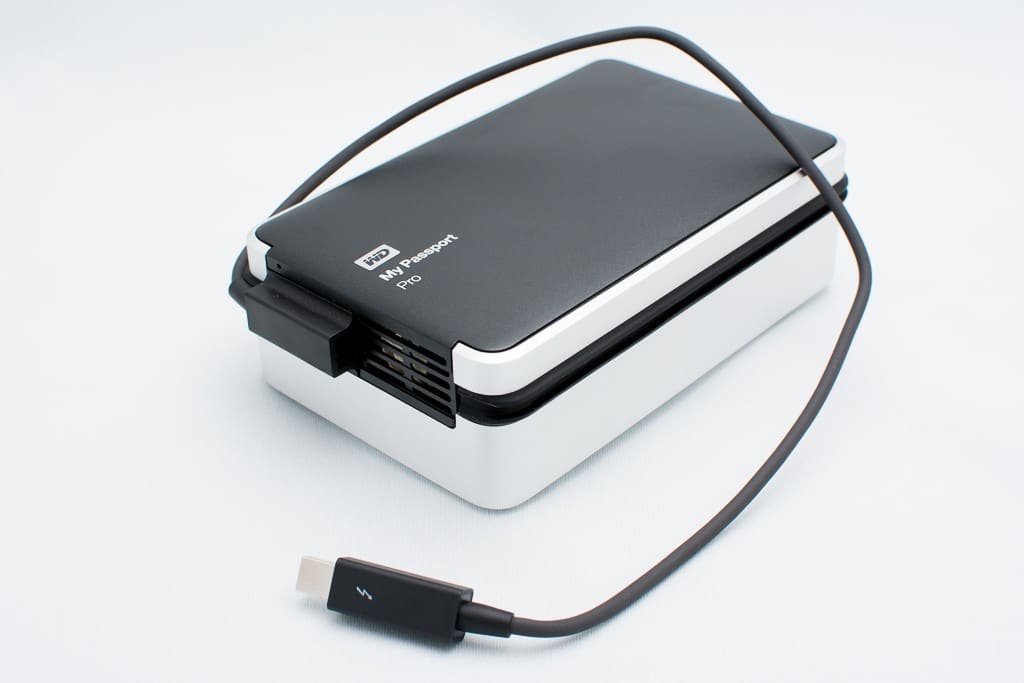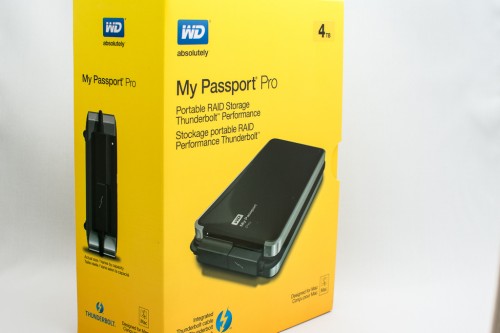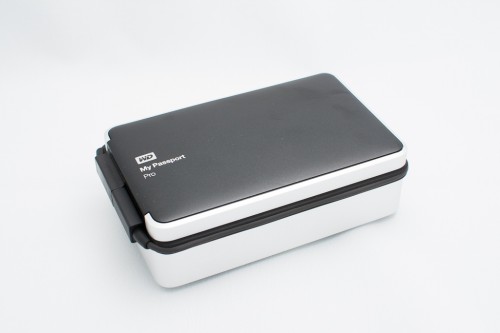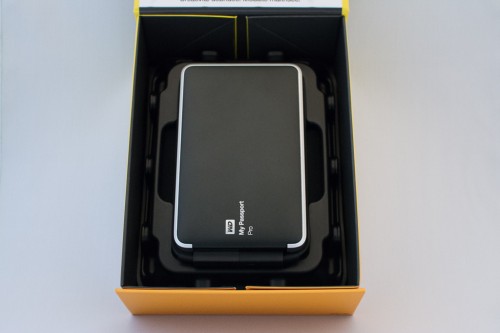In this day and age of digital entertainment, the associated files that are edited to bring you amazing still life imagery or high-definition video require high performance peripherals. With a large amount of digital content producers being out on location and not in the comfort of their studios, their devices need to be portable without sacrificing performance. This is where I believe the WD Passport Pro can be of help, as a portable storage solution that can help take your digital editing to another level on the road.
Offered in capacities of either a 2TB or a 4TB, coupled with the speeds of a Thunderbolt interface, the WD My Passsport Pro seem to offer storage in all the right places.
Features and Specifications
The Western Digital (WD) My Passport Pro is design specifically for a Mac, as the only interface it has for connectivity is a single Thunderbolt connection. Unless your PC desktop or notebook has such a port.
There are 2 flavours of the WD My Passport Pro: one in a 2TB size and the other in the 4TB size. The 4TB size is the one we will be looking at for this particular review.
The 4TB unit measures in at a height of 44.2 mm with a width of 88.5 mm and a length of 143.4 mm which does make it fairly portable for its 4TB size, though it does weigh in at a hefty 0.72kg, which feels almost as heavy as my 2011 13″ Macbook Air.
The WD My Passport Pro 4TB consists of two 2 terabyte (TB) 2.5″ hard drives which can be configured to maximize performance with RAID0 (stripping) or help keep data safe with redundancy in RAID1 (or mirroring). If you want to utilize both drives separately it can also be configured for JBOD and you will have two separate 2TB drives on a single interface.
The WD My Passport Pro series of portable storage utilizes the Thunderbolt interface for lighting fast speeds. Both the 2TB and 4TB boast up to 233MBps (that is Megabytes not Megabits) read and write speeds.
Currently, the WD My Passport Pro 2TB retails for $299CDN and the 4TB retails for $429CDN with a 3 year warranty.
What’s Inside the Box?
The box itself is of sturdy cardboard construction. You open it up by first removing the outer sleeve and then open up the top flap which stays attached via a small magnet. Inside, the WD My Passport Pro 4TB sits nestled in a injection-molded base with the included Quick Start Guide underneath. This design limits any sliding around while in transit between Western Digital and you.
There is not a whole lot extra included inside the box; you get the Passport Pro hard drive, a very short Quick Start guide (3 steps in total) and of course, the warranty card with the limited liability information. All other info/software/drivers, are located on the website these days.
First Impressions
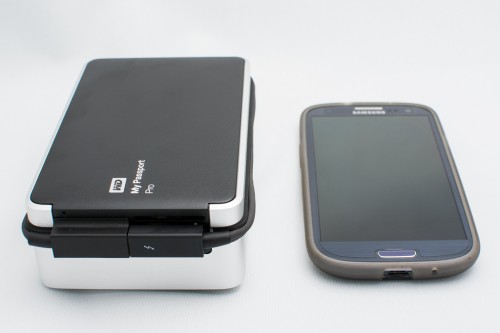
The very first thing I noticed when I took the My Passport Pro out of its fancy packaging was the weight. I’m used to a single 2.5″ drive in a small external enclosure, but this 4TB setup is a bit on the hefty side. This does come with two, 2TB drives, so I can see why it would be heavier than a single 2.5″ external drive.
Yes, the drive itself is small compared to its total storage space, but I guess you can’t have it all right? Placed next to my Samsung Galaxy S3 for a comparison, their length and width is close, but the Passport Pro obviously is a bit taller. Still the physical size of this drive for being 4 TB and supporting a couple of RAID configurations is pretty impressive.
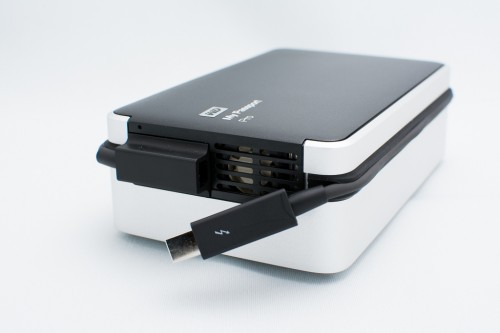
What I was also looking forward to is checking out the speeds one might be able to obtain with the integrated Thunderbolt cable. Yes, you don’t need to go out and buy a separate cable for this device, but at the same time, that integrated cable could also be a potential issue if it breaks. Thunderbolt is theoretically able to obtain speeds of about 10 Gbps bi-directional, but in the real world, we’re expecting to obtain the 233 MBps that WD says is possible.
You may also notice the small exhaust fan on the back of the housing, unless your are putting the drive though its paces you may never notice it. When benchmarking the drive and trying to push the read and write of the drive, the fan eventually would kick in. With the product having two 2.5-inch drives so close in proximity within the housing, it is nice to see a way to try and help keep things a bit cooler.
Let’s find out what the installation and setup experience is like.

